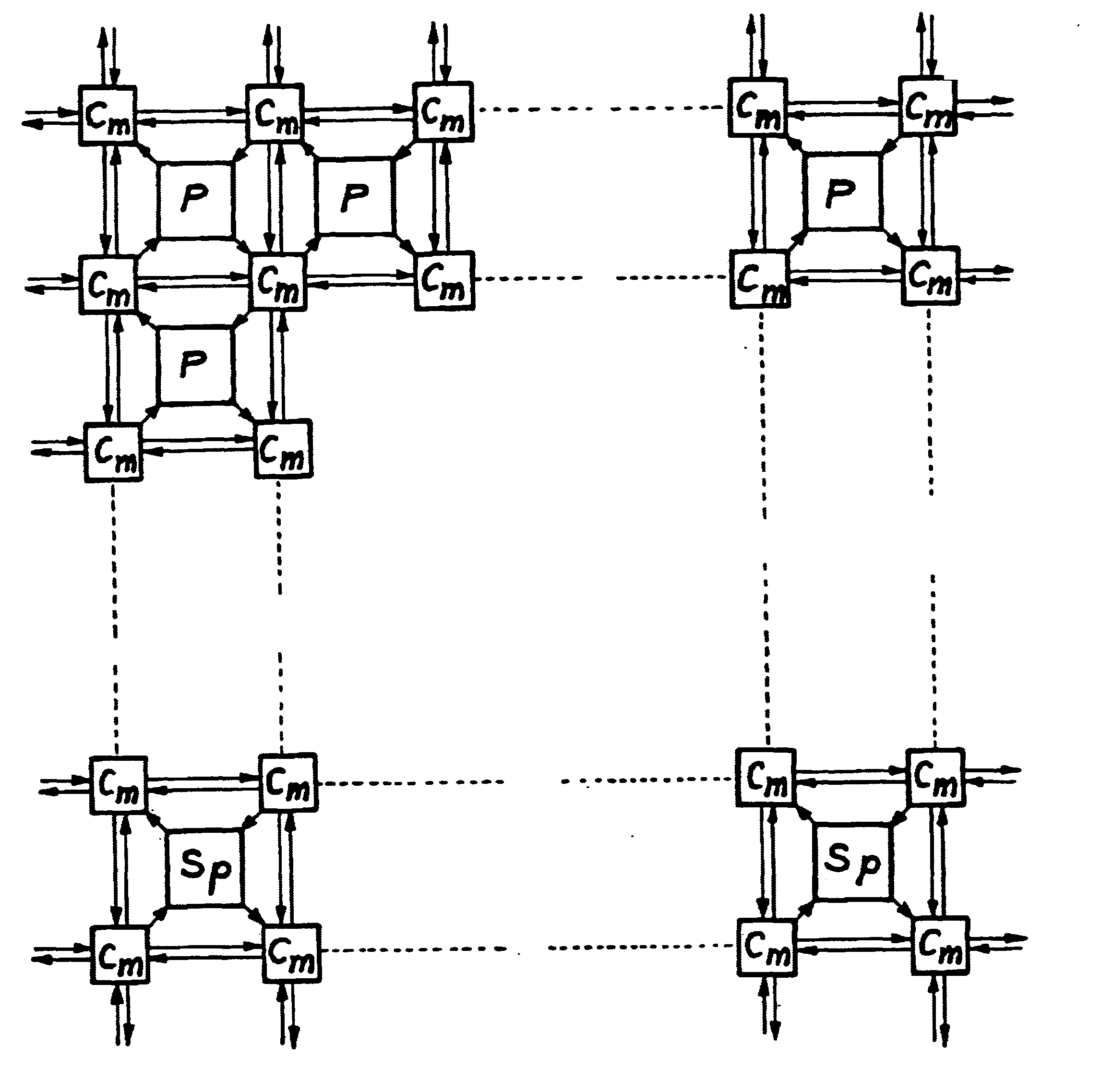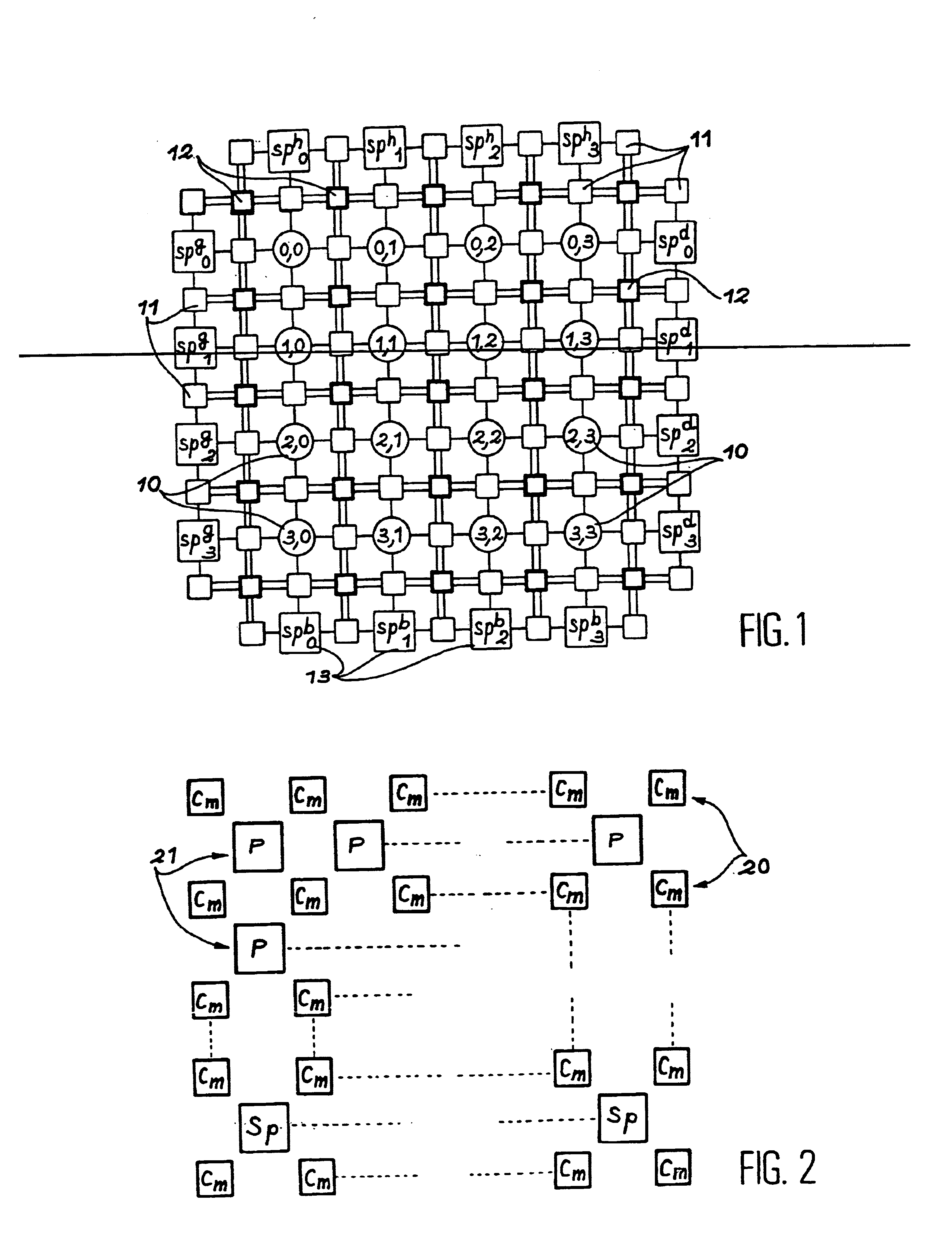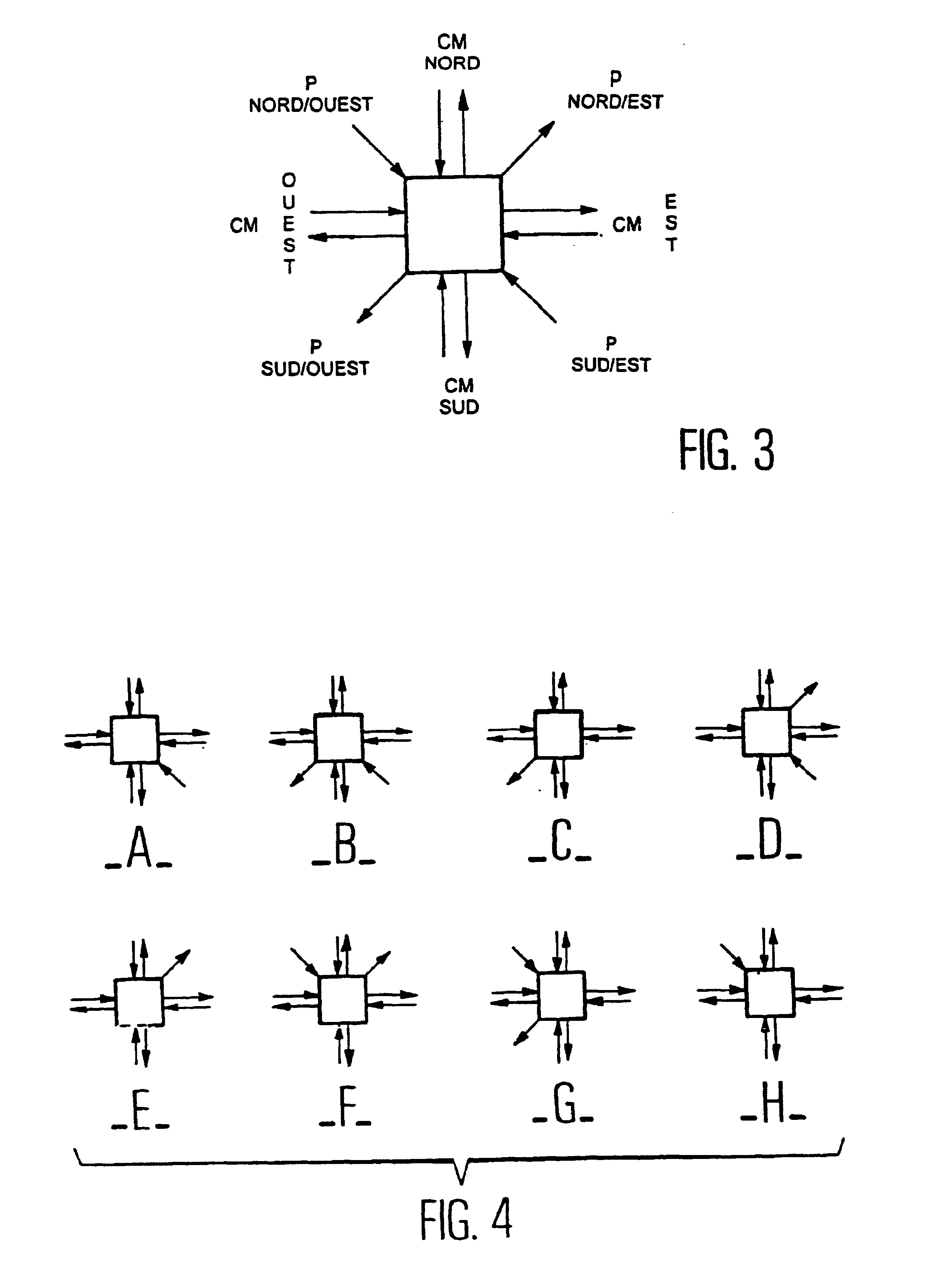Network of parallel processors to faults-tolerant towards said processors and reconfiguration method applicable to such a network
a parallel processor and network technology, applied in the field of parallel computers, can solve the problems of poor manufacturing output, complex computer elements, and complex software used, and achieve the effect of improving manufacturing efficiency and manufacturing efficiency
- Summary
- Abstract
- Description
- Claims
- Application Information
AI Technical Summary
Benefits of technology
Problems solved by technology
Method used
Image
Examples
Embodiment Construction
This invention relates, on the one hand, to a network of parallel processors tolerant to the faults thereof, and on the other hand, a method of reconfiguring such network.
Parallel Processor Network
The processor network of the invention, as illustrated in FIG. 2, is based on a matrix of ordinary elementary processors P having two inputs and two outputs, connected together by interconnecting elements Cm. The network is composed of a set of alternately arranged interconnecting element lines 20 and processor lines 21. Each processor P is surrounded by four interconnecting elements Cm. The edge elements of the network are interconnecting elements Cm. The processor lines are lines of elementary processors P and the last line of processors is a line of spare elementary processors Sp. This feature allows greater flexibility to be obtained in the choice of the number of spare processors in contrast with the prior art device illustrated in FIG. 1, wherein with one line and one column of spare...
PUM
 Login to View More
Login to View More Abstract
Description
Claims
Application Information
 Login to View More
Login to View More - R&D
- Intellectual Property
- Life Sciences
- Materials
- Tech Scout
- Unparalleled Data Quality
- Higher Quality Content
- 60% Fewer Hallucinations
Browse by: Latest US Patents, China's latest patents, Technical Efficacy Thesaurus, Application Domain, Technology Topic, Popular Technical Reports.
© 2025 PatSnap. All rights reserved.Legal|Privacy policy|Modern Slavery Act Transparency Statement|Sitemap|About US| Contact US: help@patsnap.com



